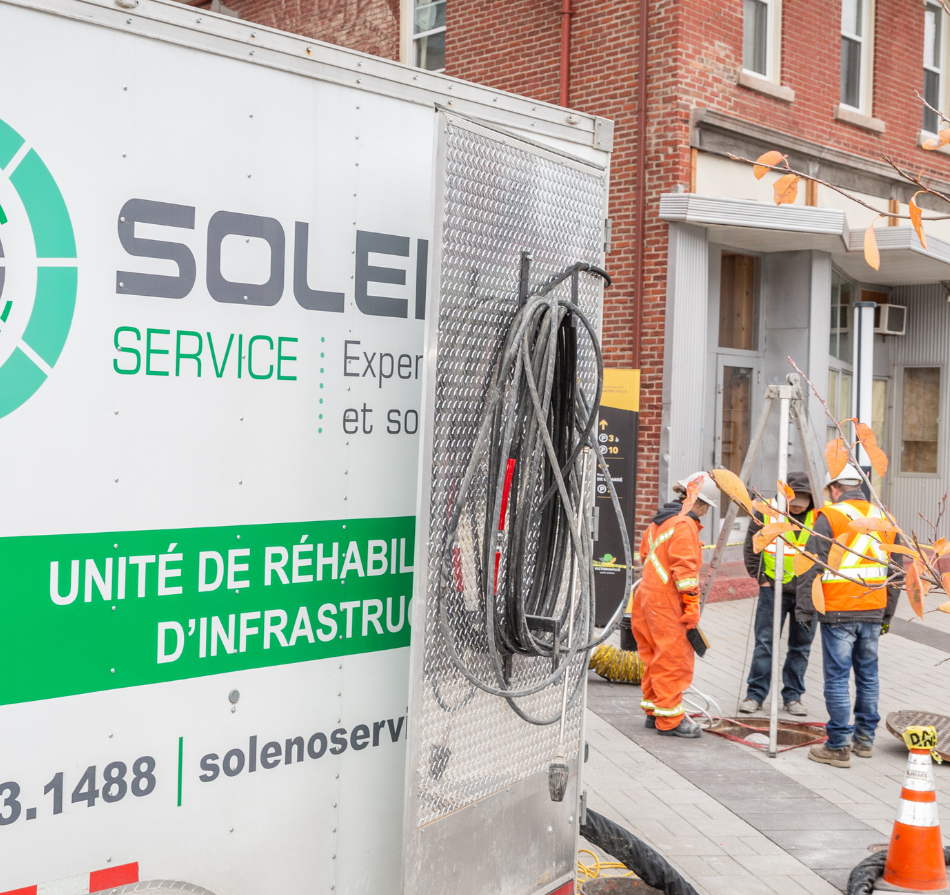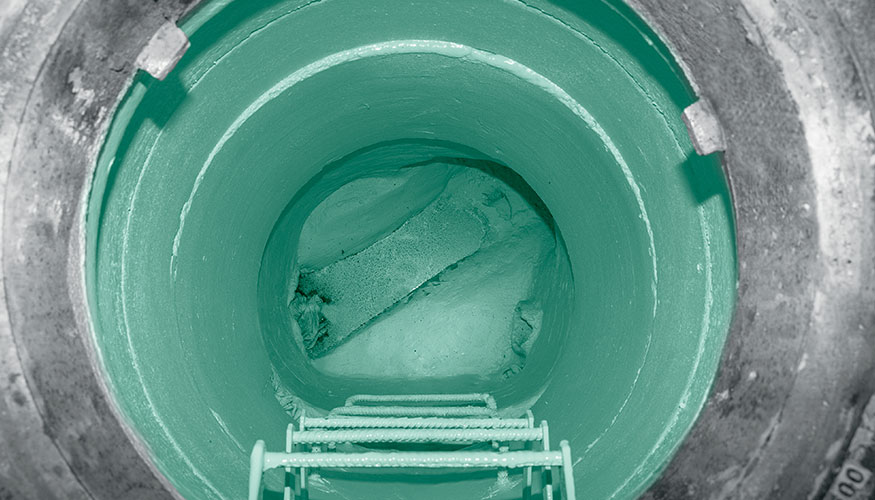Soleno Service
The reference in underground infrastructure rehabilitation


Soleno Service proposes and develops innovative techniques to extend the sustainability of underground infrastructure. Our team assists the designers, network managers and entrepreneurs in implementing innovative rehabilitation solutions to ensure the long-term performance of their infrastructure while minimising the impact on citizens and the environment. Our innovation, rehabilitation and HDPE fusion expertise enable us to respond effectively to the needs of our customers and to intervene in an efficient and safe way to extend the life of their water systems.
Epoxy spray rehabilitation, a technique proven for more than 30 years, is one of the rare effective solutions for sustainably extending the lifespan of aging infrastructures.
In addition to extending the useful life of infrastructure by more than 50 years, epoxy spray rehabilitation is a quick and effective technique, usually not requiring excavation, which minimizes the impact on citizens.
The structure is first cleaned and then sealed to eliminate any trace of infiltration. Subsequently, the successive application of layers of cementitious mortar, primer and epoxy restores the capacity of the infrastructure.
When replacement is not advantageous due to constraints related to excavation, for example, the rehabilitation by mortar spraying makes it possible to restore the structural integrity of the rehabilitated pipe at a fraction of the cost of replacement.
Centripipe high performance mortar is specially designed for the rehabilitation of large diameter pipes. Made from Portland cement, the Centripipe high-performance mortar is a complex mortar containing several additives such as corrosion inhibitors, quartz aggregates and self-sealing additives, making it possible to extend rehabilitated infrastructure for up to 70 years.
Once completed, the rehabilitation allows all live, dead and hydrostatic loads to be taken back, thus allowing the pipe to regain its structural integrity.
This is an excellent no-excavation solution for large diameter pipes (900 mm and aabove).
Across North America, gray or ductile iron water pipes installed decades ago are gradually losing their hydraulic capacity due to the accumulation of internal tubercles reducing the diameter of the pipe to obsolete.
Faced with this situation, Soleno Service now offers a rehabilitation solution that is up to 10x cheaper than traditional replacement or linings, without excavation.
Our rehabilitation solution cleans and dislodges more than 95% of the sediment while protecting it from corrosion for the next 50 years by adding corrosion inhibitor. To be able to clean everything, we use the fire hydrant as an access shaft to the distribution network.
Soleno Service has on-site polyethylene (HDPE) pipe melting units. The expertise and availability of our team ensure quality work and timely delivery.
The fusion of HDPE on site ensures perfect sealing, and allows for modifications or repairs to existing structures on site.
Talk to our team.
The MDDELCC launched a guide on sound stormwater management in January 2012. Based on section B.12 of the Application for Authorization to Carry out a Project under Section 32 of the Environmental Quality Act (EQA), Owners of stormwater treatment units are responsible for the proper operation of the equipment and maintain a record of the maintenance of their systems.
Soleno Service is meeting the needs of storm water treatment plant owners who must meet these new requirements.
Inspections and maintenance recommendations
Cleaning and disposal of sludge and filter elements
Certification under section 32 of the Environmental Quality Act
Talk to our team

Dare to compare our services with traditional solutions
Soleno Service
RBQ: 5668-4319-01
1160 Route 133
Saint-Jean-sur-Richelieu, QC, J2X 4B6 Canada
T 844.653.1488